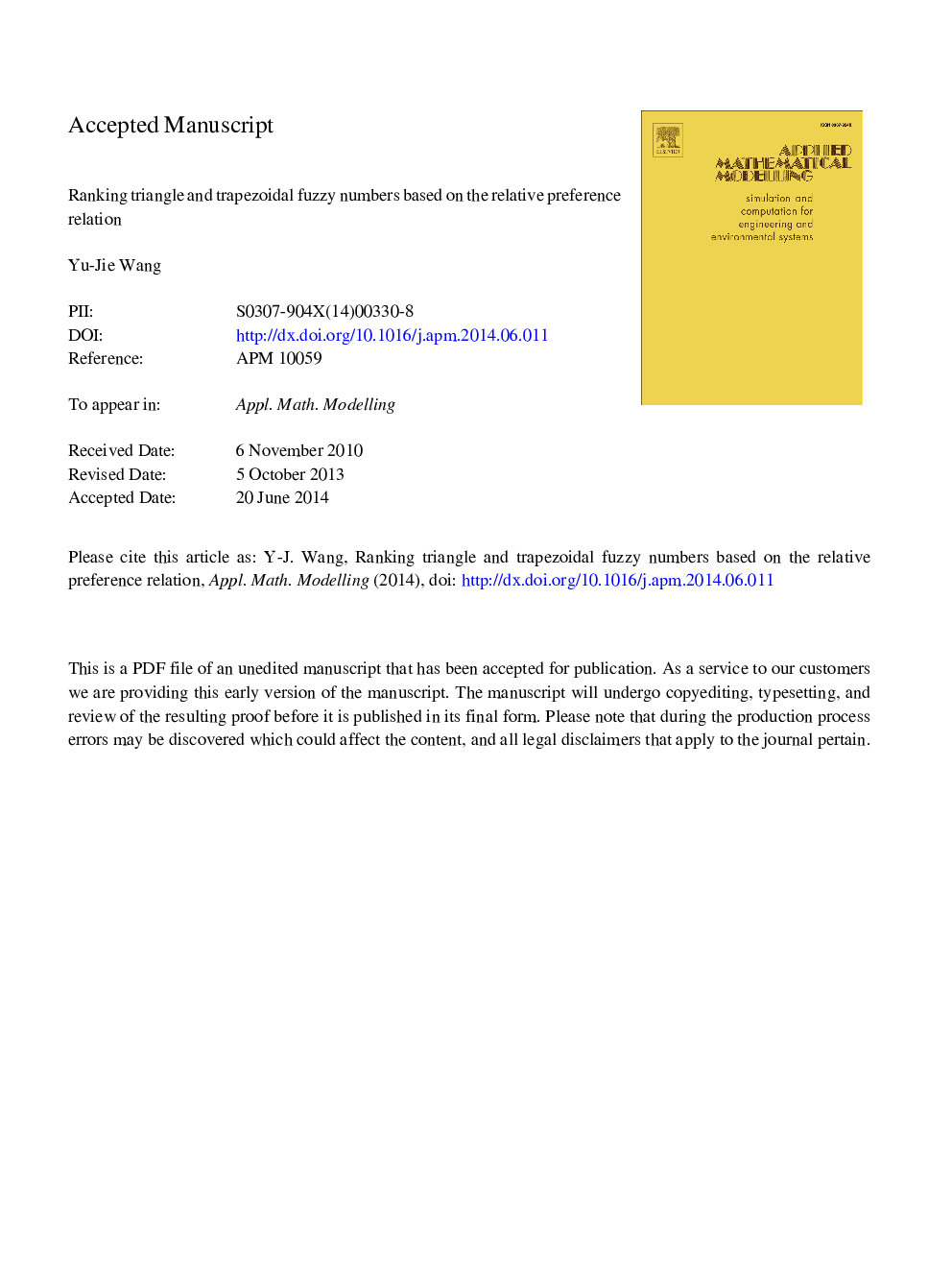| Article ID | Journal | Published Year | Pages | File Type |
|---|---|---|---|---|
| 10677725 | Applied Mathematical Modelling | 2015 | 29 Pages |
Abstract
In this paper, we first propose a fuzzy preference relation with membership function representing preference degree to compare two fuzzy numbers. Then a relative preference relation is constructed on the fuzzy preference relation to rank a set of fuzzy numbers. Since the fuzzy preference relation is a total ordering relation satisfying reciprocal and transitive laws on fuzzy numbers, the relative preference relation satisfies a total ordering relation on fuzzy numbers as well. Normally, utilizing preference relation is more reasonable than defuzzification on ranking fuzzy numbers, because defuzzification does not present preference degree between two fuzzy numbers and loses some messages. However, fuzzy pair-wise comparison by preference relation is complex and difficult. To avoid above shortcomings, the relative preference relation adopts the strengths of defuzzification and fuzzy preference relation. That is to say, the relative preference relation expresses preference degrees of several fuzzy numbers over average as similar as the fuzzy preference relation does, and ranks fuzzy numbers by relative crisp values as defuzzification does. Thus utilizing the relative preference relation ranks fuzzy numbers easily and quickly, and is able to reserve fuzzy information.
Related Topics
Physical Sciences and Engineering
Engineering
Computational Mechanics
Authors
Yu-Jie Wang,
